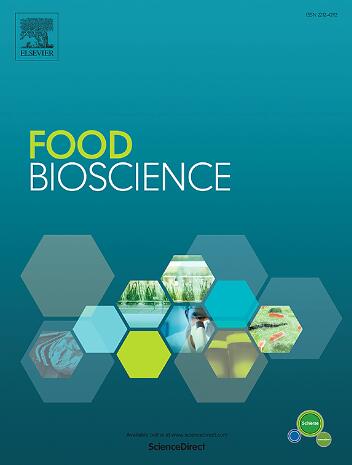Detection technologies, and machine learning in food: Recent advances and future trends
IF 4.8
1区 农林科学
Q1 FOOD SCIENCE & TECHNOLOGY
引用次数: 0
Abstract
The combination of food detection technology and machine learning can effectively enhance the efficiency and accuracy of food quality detection. Promoting the healthy development of the food industry is one of the keys to ensuring its sound progress and holds crucial significance for its advancement. The paper begins by introducing various food detection technologies, including spectroscopy, chromatography, mass spectrometry, odor sensors, and biosensors. It then delves into data preprocessing, feature extraction, and model algorithms within the realm of machine learning. Subsequently, we examine the progress made in applying machine learning-assisted detection technologies in the food sector. The synergy between food inspection technology and machine learning not only facilitates automated and intelligent inspection processes but also adeptly manages and analyzes vast amounts of data generated from diverse inspection instruments. Leveraging the robust modeling capabilities inherent to machine learning—particularly when addressing complex high-dimensional datasets—the food industry can more precisely identify potential quality concerns and safety risks. Looking ahead, emphasis should be placed on developing portable detection devices while enhancing deep learning interpretability and promoting model fusion establishment. Concurrently, ethical considerations and data privacy issues must be addressed as we strive to integrate food inspection technology with machine learning effectively. In conclusion, the integration of food inspection technology with machine learning is anticipated to significantly enhance technological innovation within the industry and bolster the capacity for monitoring food quality and safety.
食品检测技术和机器学习:最新进展和未来趋势
食品检测技术与机器学习相结合,可以有效提高食品质量检测的效率和准确性。促进食品工业健康发展是保证食品工业健康发展的关键之一,对食品工业的发展具有重要意义。本文首先介绍了各种食品检测技术,包括光谱、色谱、质谱、气味传感器和生物传感器。然后深入研究机器学习领域内的数据预处理、特征提取和模型算法。随后,我们研究了在食品部门应用机器学习辅助检测技术方面取得的进展。食品检测技术和机器学习之间的协同作用不仅促进了自动化和智能检测过程,而且还熟练地管理和分析了各种检测仪器产生的大量数据。利用机器学习固有的强大建模能力,特别是在处理复杂的高维数据集时,食品行业可以更精确地识别潜在的质量问题和安全风险。展望未来,在提高深度学习可解释性和促进模型融合建立的同时,重点发展便携式检测设备。同时,当我们努力将食品检测技术与机器学习有效地结合起来时,必须解决道德考虑和数据隐私问题。总之,食品检测技术与机器学习的整合有望显著增强行业内的技术创新,并增强监测食品质量和安全的能力。
本文章由计算机程序翻译,如有差异,请以英文原文为准。
求助全文
约1分钟内获得全文
求助全文
来源期刊

Food Bioscience
Biochemistry, Genetics and Molecular Biology-Biochemistry
CiteScore
6.40
自引率
5.80%
发文量
671
审稿时长
27 days
期刊介绍:
Food Bioscience is a peer-reviewed journal that aims to provide a forum for recent developments in the field of bio-related food research. The journal focuses on both fundamental and applied research worldwide, with special attention to ethnic and cultural aspects of food bioresearch.
 求助内容:
求助内容: 应助结果提醒方式:
应助结果提醒方式:


